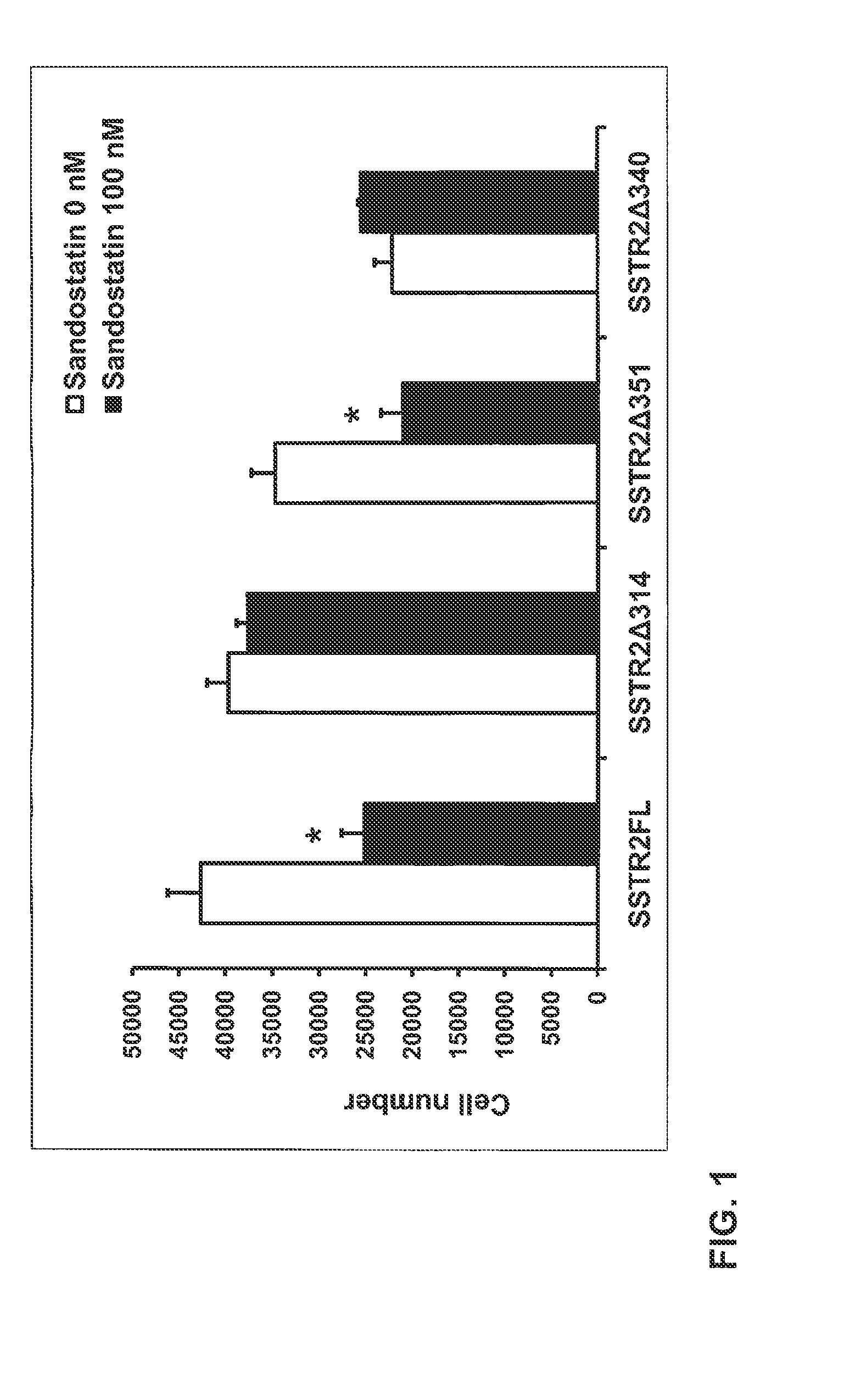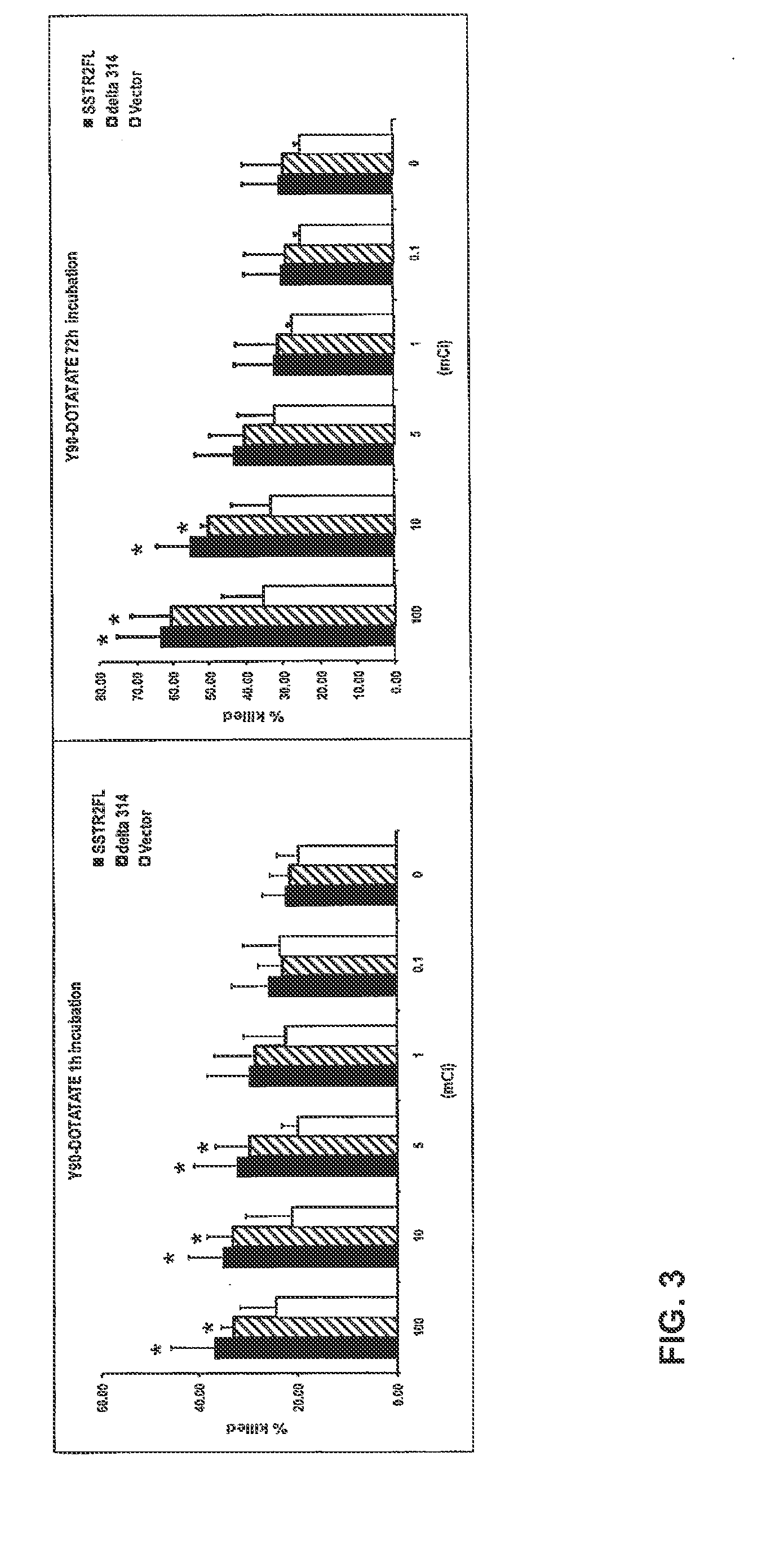Somatostatin receptor-based cancer therapy
- Summary
- Abstract
- Description
- Claims
- Application Information
AI Technical Summary
Benefits of technology
Problems solved by technology
Method used
Image
Examples
example 1
[0253]In the following experiments, HA-tagged receptors were used. In vitro experiments demonstrate that the delta340 mutant inhibits cell growth without ligand in both transiently transfected cells and stably transfected cells, whereas cells expressing wild-type SSTR2 require ligand stimulation to inhibit growth and vector control cells do not inhibit growth regardless of ligand presence. Human HA-SSTR2D314 does not inhibit cellular growth upon ligand stimulation, whereas HA-SSTR2D340 inhibits growth even without ligand stimulation, similar to inhibition by wild-type receptor upon activation with ligand (FIG. 1).
[0254]Human HA-SSTR2D340 was confirmed to inhibit growth even without ligand stimulation (FIG. 2). Two days after transient transfection with HA-SSTR2D351 or HA-SSTR2D340, 3000 HT1080 cells were grown in the presence of 5% FBS with or without 100 nM of the somatostatin analogue sandostatin. Three days later, MTT assay was used to determine cell number. Stable transfectants,...
PUM
| Property | Measurement | Unit |
|---|---|---|
| Fraction | aaaaa | aaaaa |
| Length | aaaaa | aaaaa |
| Length | aaaaa | aaaaa |
Abstract
Description
Claims
Application Information
 Login to View More
Login to View More - R&D
- Intellectual Property
- Life Sciences
- Materials
- Tech Scout
- Unparalleled Data Quality
- Higher Quality Content
- 60% Fewer Hallucinations
Browse by: Latest US Patents, China's latest patents, Technical Efficacy Thesaurus, Application Domain, Technology Topic, Popular Technical Reports.
© 2025 PatSnap. All rights reserved.Legal|Privacy policy|Modern Slavery Act Transparency Statement|Sitemap|About US| Contact US: help@patsnap.com



